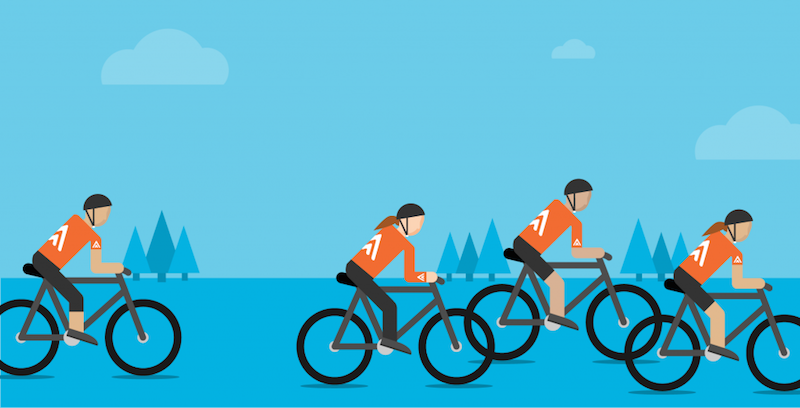Why bike?
Most things that are good for you aren’t a lot of fun, but biking is a game changer. It’s exercise, but it’s also a good time and just about anyone can do it. If your weather isn’t bike friendly, spinning on an exercise bike is just as good exercise as riding outdoors.
Biking is a type of cardio or aerobic exercise. Cardio works your large muscles over and over and pushes your heart and lungs to work hard. Over time, this makes your heart stronger — it’s a muscle, after all — and more efficient. This can lower your resting heart rate and help lower your blood pressure.
But wait, there’s more! Regular cardio exercise can improve your mood, give you more energy and stamina, and sharpen mental focus and memory. It can also help your cholesterol, build stronger bones, and lower your risk of diabetes, stroke, and certain cancers. All that, and it may help you sleep better at night too.
Biking is a good choice for many reasons:
- Biking works most of your muscles while improving your coordination and balance too.
- Your thighs, calves, and glutes get an especially good workout from the constant pedaling.
- Speaking of pedaling, that low-impact motion puts much less pressure on your knees and ankles than running, and causes less inflammation and soreness.
- This makes biking a great option for people who are overweight or recovering from injuries, or who want to give their joints a break as they age.
- If it’s tough to find time to exercise, look again: Biking can turn your commute into a workout.
- Stationary bikes and spin classes offer all the benefits of biking without pesky allergies or sharing the road with cars.
- It’s a fun way to get around and see the sights.
How long, how fast?
A little goes a long way. Biking faster than 10 mph or uphill, or spinning with medium to high effort is considered vigorous exercise. Experts say that just an hour and 15 minutes of this level of workout each week can improve your health.
Biking for fun or spinning with light to moderate effort counts as moderate exercise. You’ll need 2.5 hours of this level every week (it can be any combination of biking with walking or other exercise).
You’re going at the right pace if you can still carry on a conversation (but can’t sing). For most people, this is a sign that they’re working in their target heart rate zone.
How do I get started?
- If you’re riding an actual bicycle, you’ll need to know how to ride, of course. If you need lessons, many bike shops give lessons.
- If you’re not active right now, start slow. (If you’re getting care for a chronic condition, check with your doctor before making any major changes, like starting an ambitious exercise plan.)
- Ask the trainers at the gym or the bike shop pros to pick the right-sized bike and adjust the seat for you. It will make you more comfortable on your ride and prevent injuries. Your knee should stay comfortable all the way around, and you shouldn’t have to stretch your leg straight or pull it high up.
- If you bike outside, always wear a helmet — even on short trips. Though helmets are not required for adults (they usually are for kids), they could save your life in a crash.
- Wear comfy clothes that won’t get caught in the chain. If you ride in the sun, wear sunglasses and some sunscreen.
- Invest in some bright or reflective clothing and consider attaching a light to your bike if you plan to ride at night.
- Follow all traffic rules, ride defensively, and don’t make sudden moves. In most states bicycles are vehicles and subject to the same rules as cars. That generally means no riding on sidewalks or in crossroads, especially if you might run into people on foot.
These apply whether you’re at the gym or outdoors:
- Shift your position often and try to vary the pace.
- Don’t push it – if you’re tired, take breaks. Going too far too fast can lead to injuries, and that’s the fastest way to fall off your routine.
- Once you’re able to bike for 30 minutes a day, try challenging yourself with faster speeds or going uphill (or upping the resistance).
- Remember to drink water and have fun!
Editor: Deepi Brar
Selected references
United States Department of Health and Human Services. 2008 Physical Activity Guidelines for Americans. [Link]
The Compendium of Physical Activities. Website supported by the National Cancer Institute and Arizona State University. [Link]
UC Berkeley School of Public Health. 12 Tips for Better Cycling. Berkeley Wellness website.
NATALIE LAWSON
Rally Health





